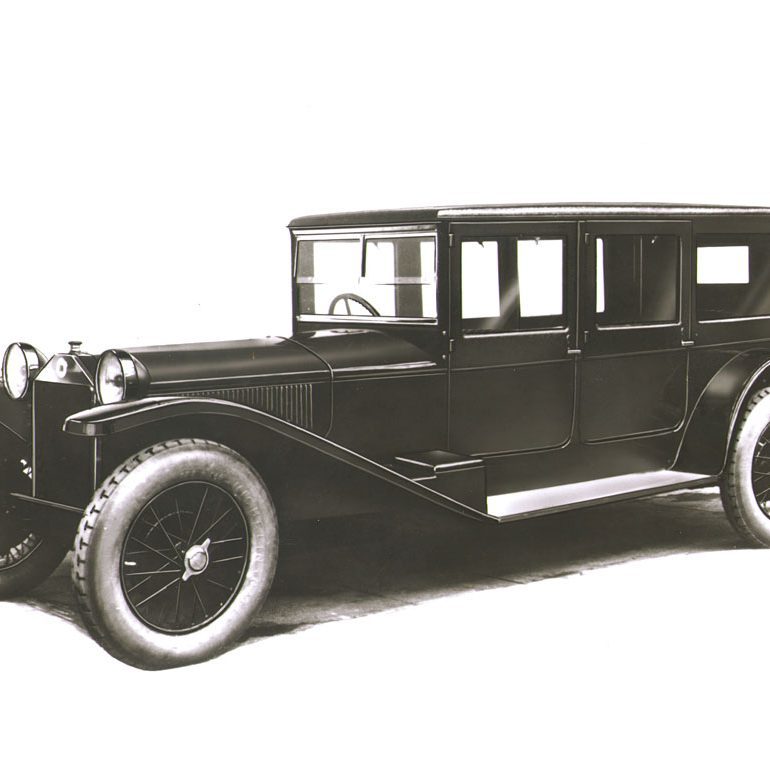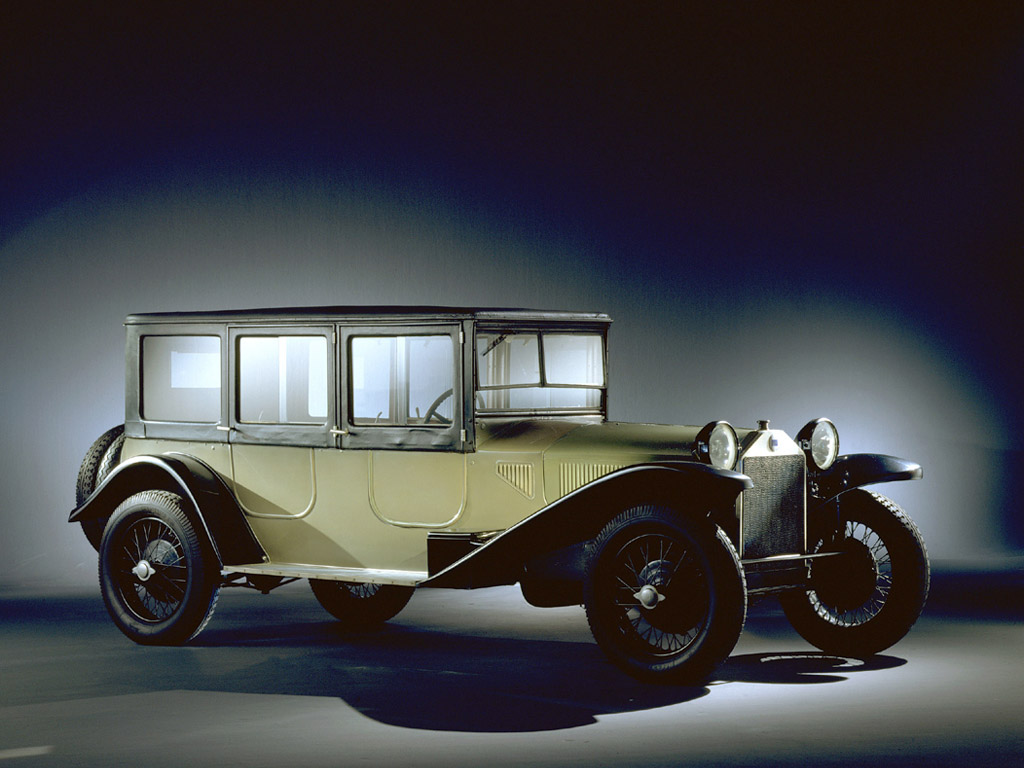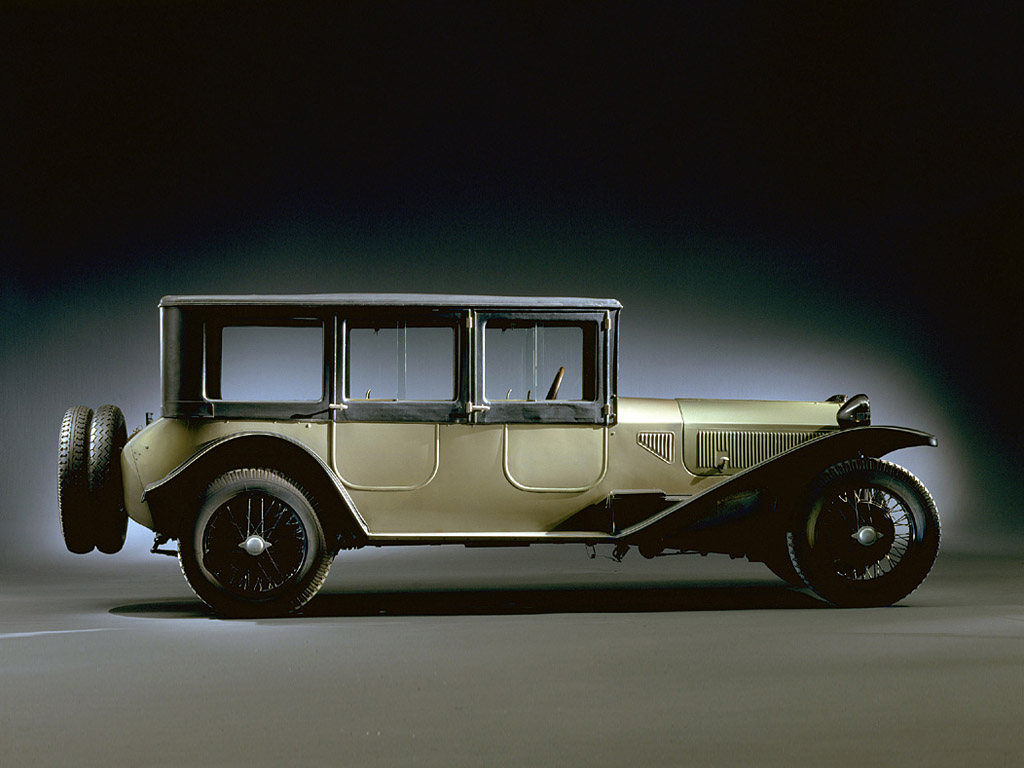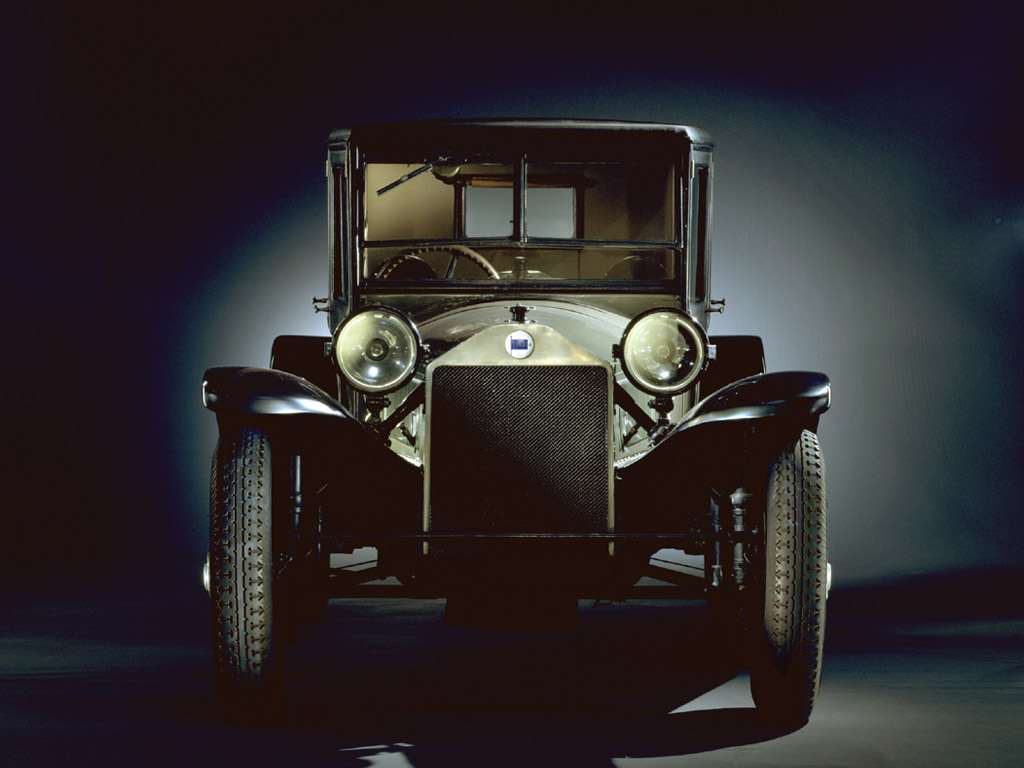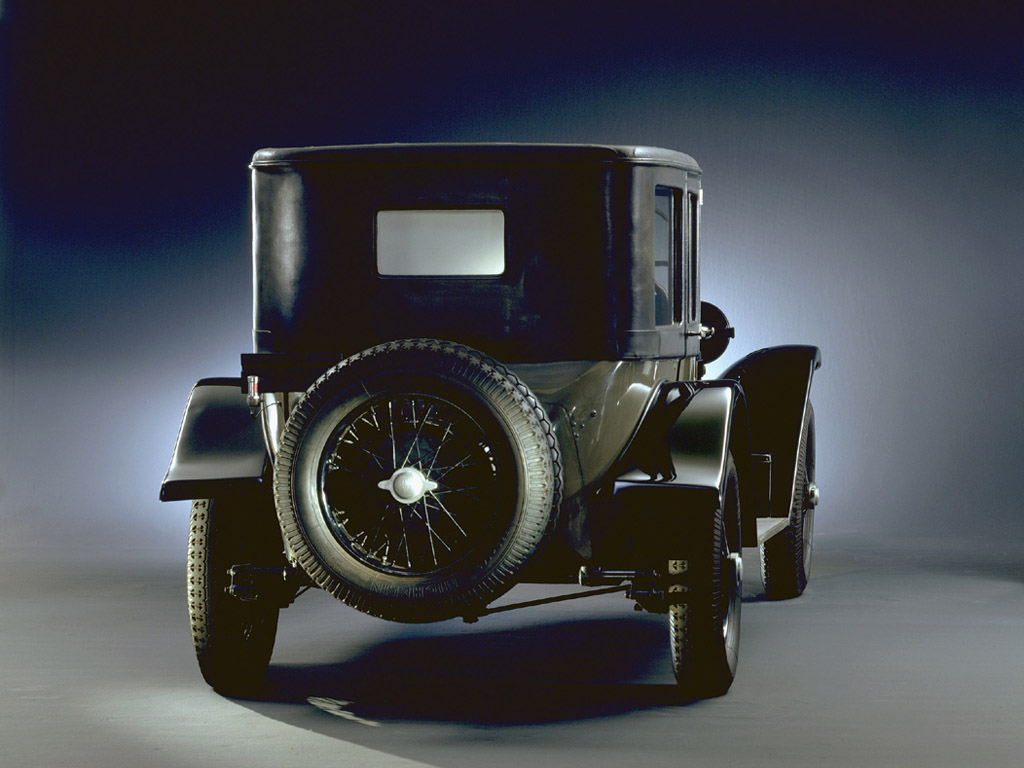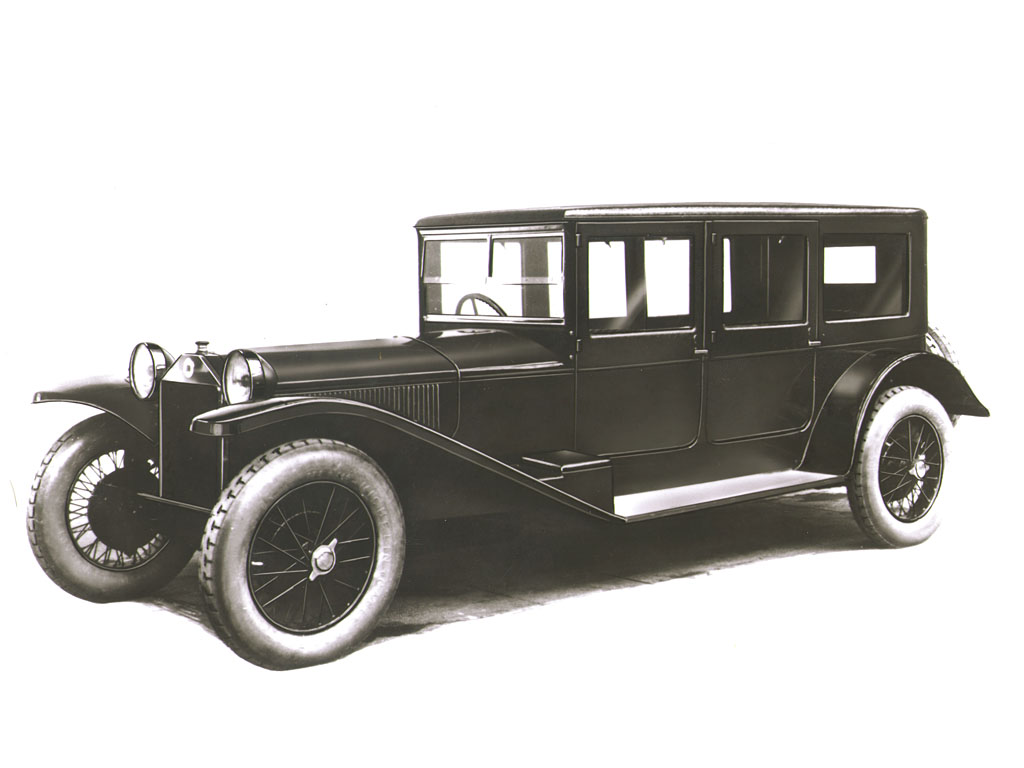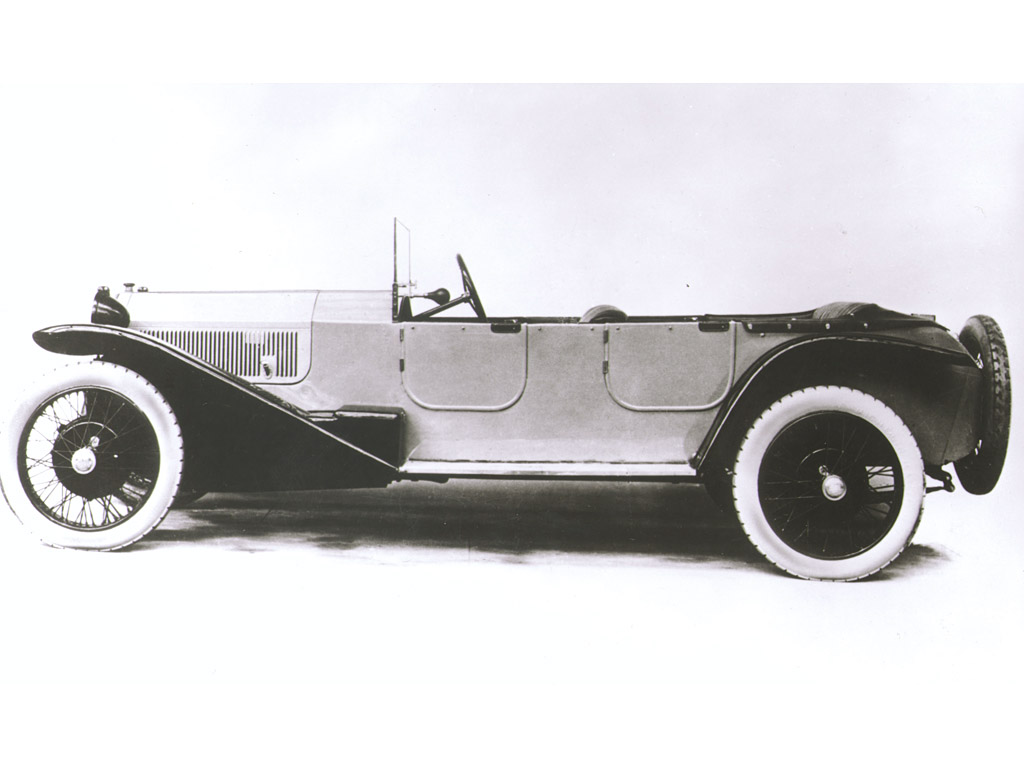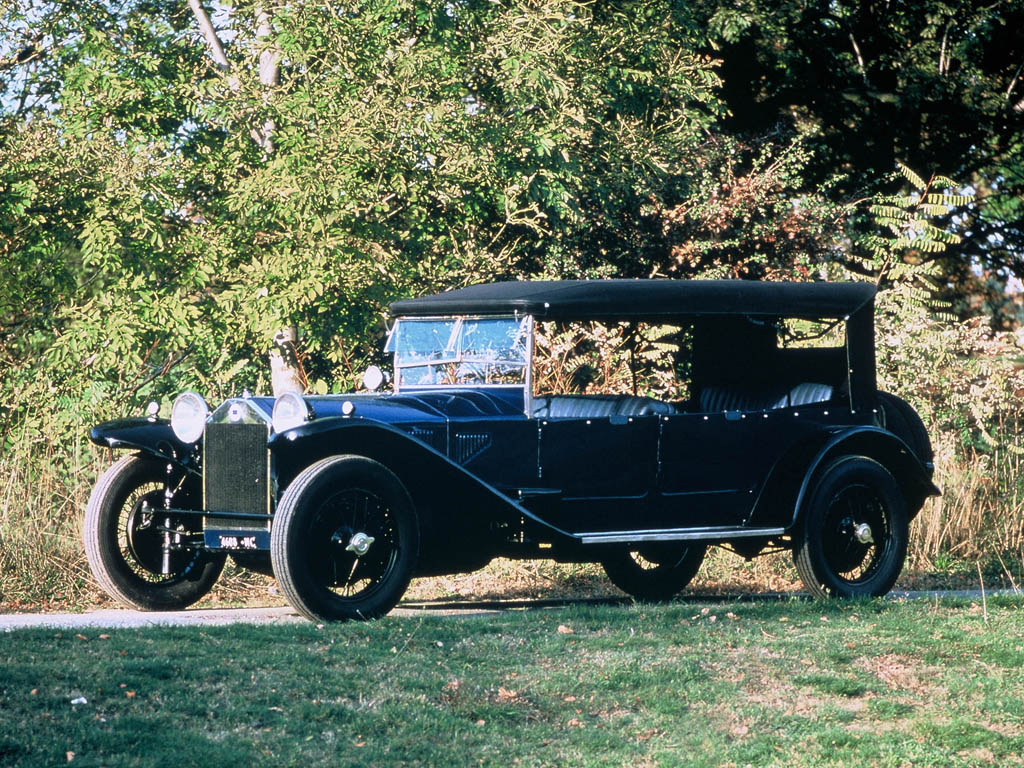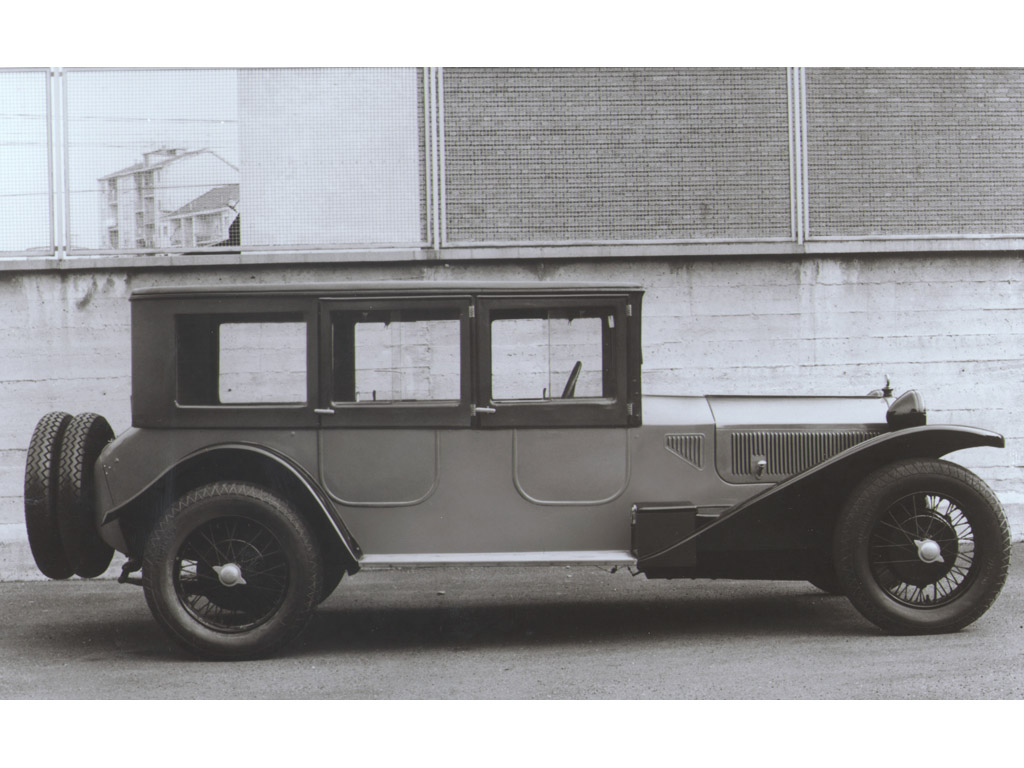1922 Lancia Lambda
The Lambda was one of the most innovative cars of the twenties with its chassis, independant suspension and compact engine. It was the first to feature a load-bearing monocoque body which adopted by almost every manufacturer thirty years later. Vincenzo Lancia personally envisioned the Lambda after considering ship design and the strength that a hull needs to battle the great seas.
Every Lamda was based around a steel monocoque which eliminated the need for a heavy frame. Most of the body’s strength came from the driveshaft tunnel which formed a lightweight backbone for the car. Passengers were seated beside the tunnel allowing for a lower roofline. Typically cars of this period placed all the occupants above the driveshaft which resulted in a high center of balance.
Aside from its revolutionary body, the Lambda was also endowed with independent sliding pillar front suspension and four wheel brakes. Combining these attributes with ample power from a unique narrow-angle V4, the Lambda was a driver’s car. So much so, Lancia prepared a Mille Miglia (MM) version, and raced with good success at that race, usually placing in the top ten.
When released for sale the Lambda became known for its road holding, spacious interior and light weight. Despite these traits, the Lambda was never regarded as an elegant nor luxurious car and Lancia described it themslves as the ”The Best Medium Powered Car in the World.” However, this didn’t stop buyers and over 11000 cars were made from 1922 to 1931. During that period the car evolved through eight different series and used progressively larger engines.
The specification listed is for an eighth series car which featured an updated 2570cc engine and a 4-speed manual.
In Detail
| submitted by | Richard Owen |
| engine | Water Cooled, V4 |
| position | Front Longitudinal |
| valvetrain | SOHC, |
| displacement | 2570 cc / 156.8 in³ |
| bore | 82.57 mm / 3.25 in |
| stroke | 120 mm / 4.72 in |
| compression | 5.15:1 |
| power | 51.5 kw / 69.1 bhp @ 3500 rpm |
| specific output | 26.89 bhp per litre |
| bhp/weight | bhp per tonne |
| body / frame | Aluminum over Stressed Steel Monocoque |
| driven wheels | RWD |
| front tires | 14×50 |
| rear tires | 14×50 |
| front brakes | Drums |
| f brake size | mm / in |
| rear brakes | Drums |
| r brake size | mm / in |
| steering | Wrom & Wheel |
| f suspension | Independant Sliding Pillar w/Coil Springs, Telescopic Damper |
| r suspension | Live Axle w/Sem-Elliptic Leaf Springs, Friction Dampers |
| curb weight | 1117 kg / 2463 lbs |
| wheelbase | 3419 mm / 134.6 in |
| front track | 1417 mm / 55.8 in |
| rear track | 1417 mm / 55.8 in |
| length | 4572 mm / 180.0 in |
| width | 1661 mm / 65.4 in |
| transmission | 4-Speed Manual |
| gear ratios | 3.19:1, 1.89:1, 1.44:1, 1.00:1, :1 |
| final drive | 4.45:1 |
| top speed | ~120.7 kph / 75.0 mph |


